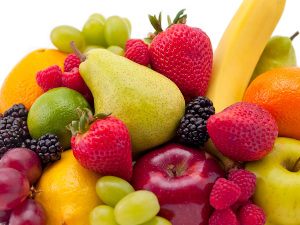Agronometrics in Charts: Mandarins sweeten Chilean citrus exports

In this installment of the ‘Agronometrics In Charts’ series, Colin Fain illustrates how the U.S. market is evolving. Each week the series looks at a different horticultural commodity, focusing on a specific origin or topic visualizing the market factors that are driving change.
As the region's biggest producer, Chile plays a key role in the U.S. citrus season, dominating supply for various categories during its window, the country's production is essential for setting U.S. market pricing.
Chile's production typically starts in around April and May with clementines, followed by lemons and oranges and closing big with what the USDA labels as tangerines. In Chile they are more commonly referred to as mandarins, but there continues to be ambiguity in definitions.
With all that said, it is clear that tangerines are the dominant player in the market, but it wasn't always this way.
Citrus Imports to the U.S. from Chile | Conventional Volumes (KG)
(Source: USDA Market News via Agronometrics) [Agronometrics users can view this chart with live updates here]
Looking back on the last 20 years it is impressive to see how the category has developed. In and around 2010, growth was led by oranges while tangerines were just getting started.
By 2015, growth in tangerine production went from walking to running and in 2017, production was racing, finally overtaking oranges as the most important citrus crop being imported to the U.S. from Chile.
Citrus Imports to the U.S. from Chile | Conventional Volumes (KG)
(Source: USDA Market News via Agronometrics) [Agronometrics users can view this chart with live updates here]
Pricing offers some insight into why the tangerine market has been more attractive than the other late-season categories. With strong pricing throughout its season at a healthy clip above oranges and lemons, it is not too much of a surprise that tangerines have been as popular as they have been.
However, just looking at the data from last year does not offer enough context to understand how these categories have evolved.
Citrus Imports to the U.S. from Chile | Conventional Prices (USD/KG)
(Source: USDA Market News via Agronometrics) [Agronometrics users can view this chart with live updates here]
We can make more informed observations by winding back the clock 20 years once again. Tangerines have maintained consistently high prices since 2013 when enough fruit was sold on spot markets to report a price.
Even though the tremendous growth in volume the category has seen, pricing has remained more buoyant than one might have otherwise expected.
Citrus Imports to the US from Chile | Conventional Prices (USD/KG)
(Source: USDA Market News via Agronometrics) [Agronometrics users can view this chart with live updates here]
Looking to the 2021 season, the Chilean Citrus Committee of Asoex published its forecast of the upcoming citrus season predicting an 11% increase in volumes year on year. Unsurprisingly, tangerines are expected to lead the charge once again.
Clementines are expected to be the second-fastest-growing commodity in 2021. They have also maintained similarly high prices, but have only enjoyed limited growth in volume.
The market data doesn’t offer much of an explanation for why this is, but one scenario that could explain the incoherence would be if production costs were higher than tangerines, meaning that producers would gain less profit from their exports despite the higher prices. The news that exports are picking up may point to a change in this balance.
In our ‘In Charts’ series, we work to tell some of the stories that are moving the industry. Feel free to take a look at the other articles by clicking here.
You can keep track of the markets daily through Agronometrics, a data visualization tool built to help the industry make sense of the huge amounts of data that professionals need to access to make informed decisions. If you found the information and the charts from this article useful, feel free to visit us at www.agronometrics.com where you can easily access these same graphs, or explore the other 20 fruits we currently track.










































